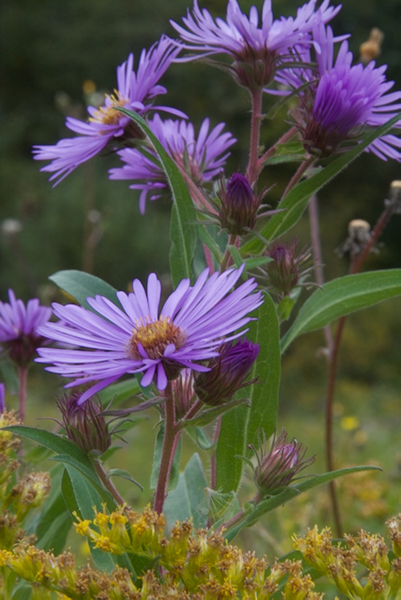by Lisa Ballantyne
Native plants are indigenous to a region. They have existed there for a very long time—have adapted perfectly to its conditions and support the local ecosystem, including important pollinators.
Since the plants, animals and insects have co-existed for many, many years there is often a symbiotic nature. Certain plants attract certain insects. For instance, swamp milkweed, Asclepias incarnata, is a primary host plant for Monarch butterflies. Highbush blueberry is an excellent food source for mining bees, mason bees, and long-tongued bumble bees.

Interest in returning to having native plants in our yards and gardens has certainly been surging. Gardeners are looking for native trees, shrubs and perennials. Fortunately, the availability of these plants is beginning to grow with more and more choices available every year.
As is well known, many of our native pollinators have been struggling to survive. Some believe that a lack of native plants plays a role. Much land has been cleared for housing, farming and other development. To counter this habitat loss, we are beginning to see farmers leaving wider hedgerows as an increase in pollinators means higher yields. We as homeowners and consumers can do our part by planting more native plants to support pollinators. Reducing or even eliminating lawn areas and replacing with natives can go a long way in providing food and habitat that has long been lacking.
It is important for our native pollinators to have a food source from early spring to late fall. When adding new plants to your garden or yard try to be conscious of the need for early-, mid- and late-season flowering plants.


Early blooming native plants include wild geranium (Geranium maculatum), pussy willow (Salix discolor), and raspberry (Rubus spp.). Mid-season natives would be plants such as wild bergamot (Monarda fistulosa), swamp milkweed (Asclepias incarnata) and American basswood (Tilia americana). Late season flowering native plants might be cardinal flower (Lobelia cardinalis), buttonbush (Cephalanthus occidentalis) and New England aster (Symphyotrichum novae-angliae).

There is no question that the natural world is a complicated balance of plants, animals, insects and environmental factors such as weather. When one goes out of balance, so go the others. Often, we humans can unwittingly have a hand in throwing off that balance. Planting more native plants, can be our way of starting to put things right.
Lisa Ballantyne is co-owner of Ballantyne Gardens in Liverpool, NY. She and husband Tim have a nursery and landscaping business that promotes organic gardening, gardening for wildlife, and native plantings.
Views: 2




